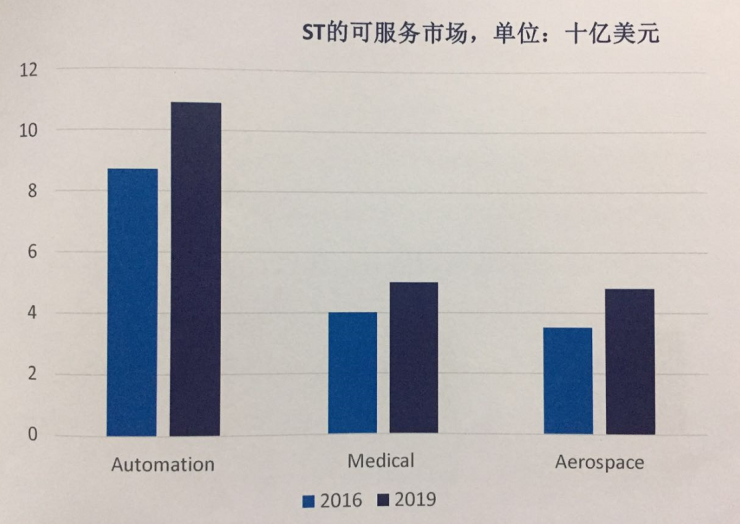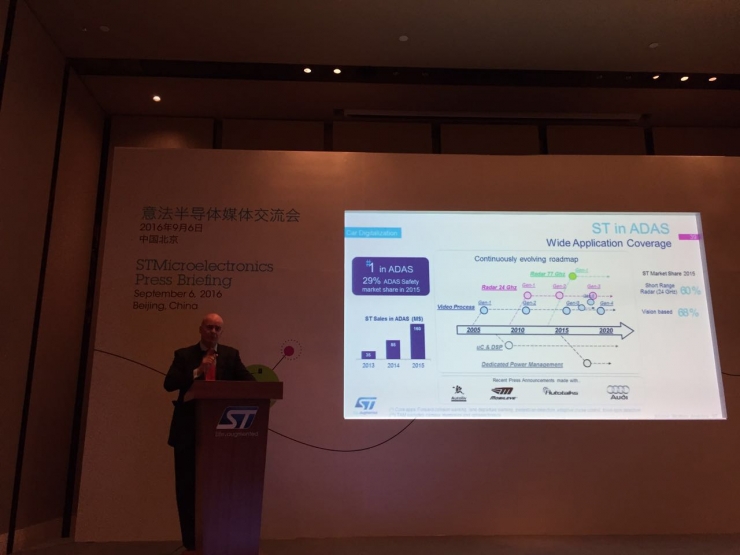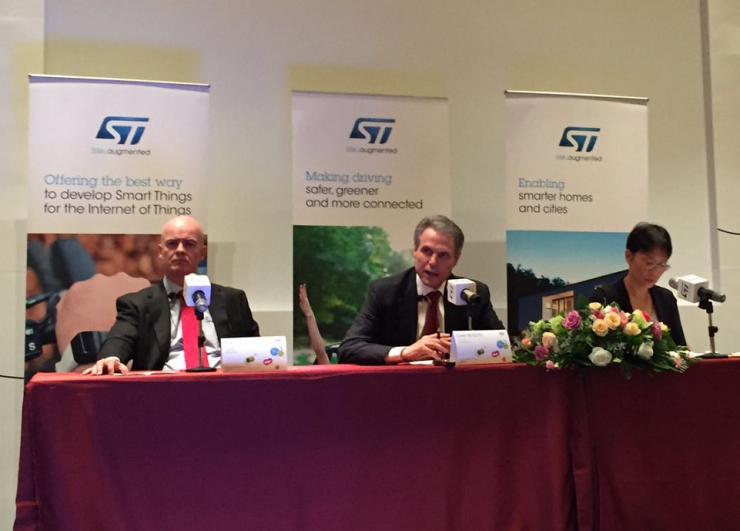In recent years, ST's revenue performance has been unsatisfactory and has experienced negative growth for three consecutive years. In 2015, it closed at $6.9 billion. The change in ST's exposure in the media has also increased in the past two years. Caro Bozotti, ST CEO , who has been in charge of Shuai India for 11 years, and Marco Cassis, President of Asia Pacific Region, came to Beijing to share with us the company's smart driving and IoT strategy. Business status. This time, the top management of the company unveiled and the mood for accelerating the expansion of the Chinese market seemed urgent.

STMicroelectronics CEO Carlo Bozotti
Strategic new architecture Founded in 1988, ST has been engaged in the research and development of digital consumer electronics, microcontrollers, automotive products, smart power, MEMS and sensors. The current business areas include the European Region (Germany, Italy, France) and the Asia Pacific region (China, Japan, In South Korea and South Asia), ST has always adhered to a diversified product strategy, and its numerous semiconductor products and solutions have penetrated into various fields of manufacturing. However, the downturn in the industry did affect its revenue.
Carlo Bozotti said that the company has now established a new strategic framework that will focus on smart driving and the Internet of Things.
According to him, the smart driving business covers ADAS, V2X, and new energy vehicles. It is in line with the automotive industry's security, networking, and green development directions . The business in the security field is increasingly important.

By 2019, the market capacity for smart driving safety will reach US$8.6 billion
Smart industries, smart homes and smart cities, and smart hardware are major components of the Internet of Things. The demand for semiconductor products and solutions in the future is also very large.

Market capacity in some areas of smart industry (for example, the automation market reaches $1.1 billion in 2019)
According to official data, these two areas will generate a serviceable market of about $150 billion.
Goal: China's smart driving market Marco Cassis, president of the Asia-Pacific region with a background in automotive business, focused on smart driving related business and also analyzed the future of the Chinese automotive market.
There is a concept that needs to be clarified. ST is referring to Smart Driving, which cannot be equated with Self Driving. On September 22 last year, ST held an automotive electronics technology event in Shenzhen. Marco Monti once said that driverlessness is the future, and ST currently emphasizes active safety, such as ADAS.
In 2015, ST Automotive's revenue was US$1.7 billion, a decrease from last year’s US$1.805 billion. But this does not prevent it from occupying an important position in the brake system, engine control, ADAS, and audio and video segments. Official data shows that there are now 30 ST products on every new car.

Marco Cassis, President, Asia Pacific
Keshimeng cited data from Strategy Analytics to analyze the status of China's auto market in the future.
He said: By 2020, the proportion of China’s automobile output in the world will reach 29%, which will be 7 percentage points more than in 2010; the growth rate of innovation will continue to accelerate in China, especially for the semiconductor cost of each vehicle. The compound growth rate will reach 4.2% by 2020, and this market is continuously deepening.
At the same time, the market share of the domestic brands of vehicles is also rising, and is expected to account for 43% in 2022. And cars are constantly moving toward high-end, and new energy vehicles are growing strongly. After 2019, sales of electric and hybrid vehicles are expected to exceed 2 million, and China will become the world's largest electric vehicle market.
All the data points to a bigger and deeper market. In fact, many pre-installed and post-installed products on smart driving in China have sprung up, but the defects of the underlying technology have also led to the immaturity of the overall product. For example, ADAS, there is no mature product in China at present.
It is precisely because of this, ST, who has a rich product portfolio (almost covering all automotive applications), wants to speed up the layout on the Chinese market.
Technical reserve
For the ADAS system, ST currently has sensors and processors for these systems. At the same time, the company has a five-year history of cooperation with Mobileye and jointly develops related system chips. The fifth-generation system chip - EyeQ5 news has been exposed in May this year, this system chip will become the core chip of a fully automated driving car, before each generation of products, ST has participated. Carlo Bozotti told Lei Feng Network (search "Lei Feng Net" public concern) , the fifth generation of system chips will be available in 2018, put into production in 2020.
In terms of car networking, ST is preparing to deploy V2X on a large scale. Chipsets that are partnering with Autotalks plan to mass production in 2017 and currently conduct automated driving trials in multiple locations around the world.
In addition, the silicon carbide technology developed by ST for electric vehicle batteries can improve the endurance of electric vehicles while also reducing battery size and saving costs.
According to the introduction of Keshimeng, in response to the Chinese market, ST has made special investment to develop special solutions that meet the characteristics of the Chinese market (the specific amount has not been disclosed); at the same time, it has continued to cooperate with domestic auto manufacturers and R&D teams; universities and scientific research institutions have also become Its goal.
The above facts indicate that ST is determined to accelerate the development of the Chinese market and hopes that its products will be applied to all aspects related to smart driving .
Nowadays, ST is also the semiconductor manufacturer that makes automatic driving chips. Nvidia is the representative. Recently, Nvidia CEO Huang Renxun also announced that it will jointly develop a platform for self-driving cars with Baidu. At the same time, Nvidia has also cooperated with Tesla in autopilot chips. Compared to ST, Nvidia is less focused on the business line. The opponents faced by ST are far more than Nvidia's. Many internationally-known semiconductor manufacturers such as Texas Instruments and ARM are actively deploying, and at the same time, they should not forget the Chinese local manufacturers who are ready to go in the relevant segment.
Ke Shimeng, who has fought for 23 years in the Asia-Pacific region, will go to Hong Kong to direct his work. This is closer to the Chinese mainland market. In other words, at least in the field of smart driving, Keshimeng is ambitious. Regardless of the distant future, the Japanese-proficient Italian expressed their interest in our plans to learn Chinese.

Axial Metallized Polypropylene Film Capacitors
Power Supply Capacitor,Filter Power Capacitor,Hv Film Capacitor,High Voltage Metallized Film Capacitor
XIAN STATE IMPORT & EXPORT CORP. , https://www.capacitorhv.com